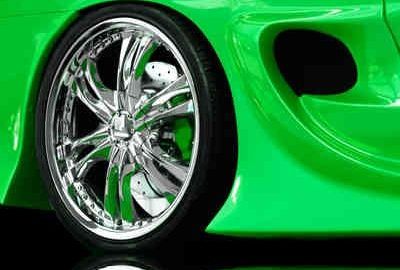Hot Wheels, Cool Aging

Driving down the Massachusetts Turnpike I came up behind a small sporty coupe. What was striking even from a distance was the color. It was a neon green that I had not seen since playing with my favorite Hot Wheels model cars as a kid in the 1960s and 1970s. Even 40-plus years ago the color was so outrageous that it had to be a toy or a car of the far future. As I came closer to the sleek green machine all I could think was who is driving this car that screams ‘look at me’! At the helm was a man well into his 70s accompanied by a woman of about the same age – given their direction and the lawn chairs showing through the rear windows they were on their way to a fun weekend in the Berkshires.
These days there are lots of adjectives for aging. There is the old but still in vogue ‘healthy’ aging. Then there is ‘graceful’ aging, ‘independent’ aging, ‘active’ aging and many more. So many descriptions for something people have been doing…well…forever. It is not clear if there is confusion on what is the most desired feature of old age or if there are just so many things we want aging to be. I am adding yet another adjective to contribute to the cognitive clutter – cool aging.
Cars are remarkable works of design that are often extensions of our personalities. For the entire lifespan of the baby boomers, automobiles have effectively reflected and reinforced the way we choose to live. My older road mates who were speeding down the road in electric green style suggest that while we all want to be healthy, active and independent – fun and style still matters for many of us at any age.
So while buying hot wheels in old age may be reserved for a select group – it should be noted that high-tech, high-style and high-priced vehicles are typically bought by consumers whose average age is well into their 50s if not 60s. According to Auto Trends Magazine the average age of car buyers (regardless of price) has increased from 48 in 2007 to 51 in 2011. For example, Polk reports that the average Lincoln buyer is now 60 and even the eco-chic Smart Car buyer is averaging 53. Given that cars are often the second most expensive asset a household will buy, designers and producers of other products and services seeking to engage the 50-plus market might want to gleam a few lessons.
Functional Fun – just because the consumer is older that does not mean that value is on function alone. Even the 52-year old average Subaru buyer is looking for a good ride with plenty of storage. Honda discovered this when designing for surfer dudes they also reeled in silver dudes. Honda’s Element provided the on-the-go fun with the easy to use, easy to store, easy to clean features that buyers wanted across the lifespan. Fun may be defined differently across age groups. But, designing and engineering fun into a product and service experience is still a demand – producers just have to be more creative to understand fun at 50-plus.
Fashion is Forever – who says that buyers stop caring what they look like or what their purchases say about them? Fashion is forever if done well. Cadillac’s 57-year old average buyer is demanding tech and style as much as the max comfort GM’s flagship platform can provide. Medical device manufacturers, consumer packaged goods and others seeking to reach the discretionary income of the 50-plus must learn that universal design if not done well can be universally boring and as the car industry shows there are other colors for technology-laden products other than medical gray and clinical blue.
Aspiration is Not Dead– between 2007 and 2011 the average luxury car buyer age increased nearly 3 years. While the car is only one investment, it is a powerful and pricey indicator of what people want and will buy. Within the bounds of each income segment there is the continuing desire across the lifespan for new, different, better and apparently really colorful too. The auto industry was never about transportation alone. It was about designing a product that captured and enhanced the ageless qualities of freedom, independence and individual style. Every company must ask are we exciting and delighting our customers by exceeding aspirations for living better or simply responding to the needs of old age – real innovators create new dreams.
Old age is not about being old, it is about life tomorrow where you will be older but living and, with some work, better than previous generations of older adults. It is up to us as individuals, families and creative businesses, designers, engineers, technologists, marketers and others across all industries to craft dreams, products and services for what life tomorrow will be…I vote for cool.





